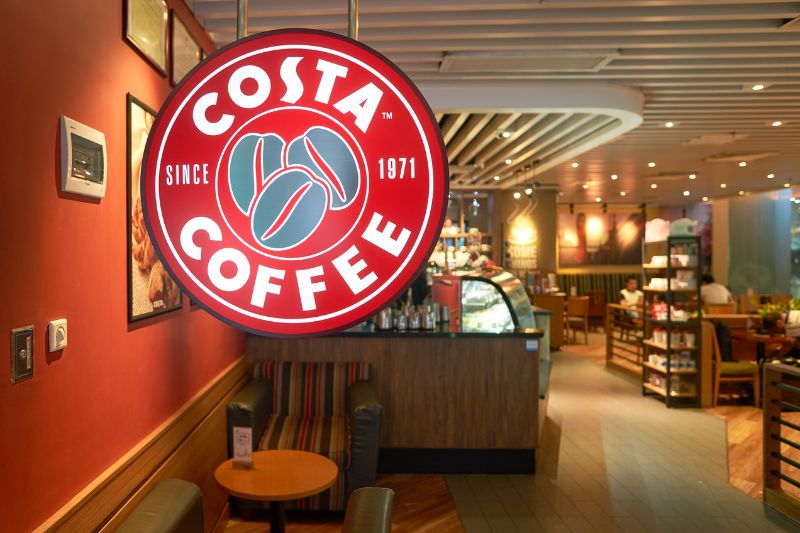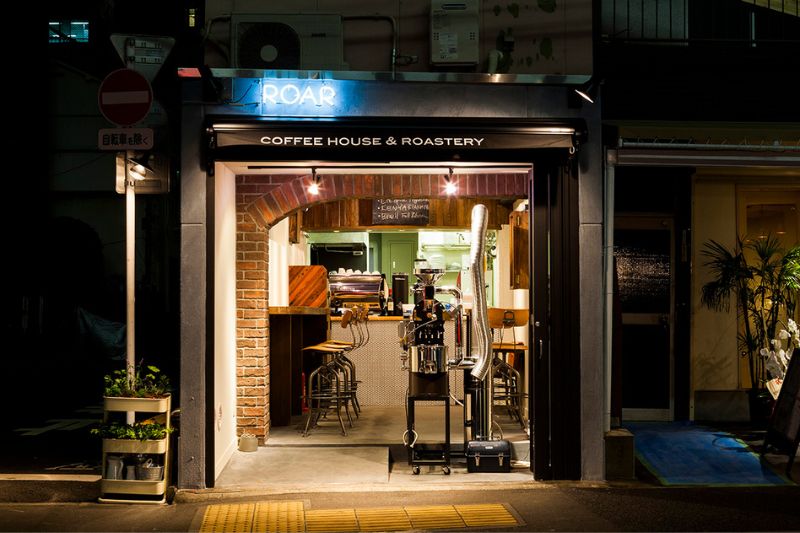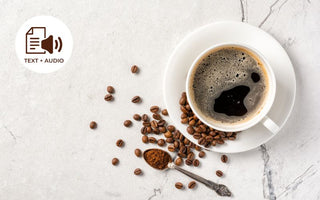I was privileged to visit a country that very few dare to travel to - Cuba. It is an overlooked gem known primarily for its world-famous cigar production and a complicated political history between the United States. Not only is Cuba said to be a stunningly beautiful place, but I had also heard that it was one of the world’s finest coffee producers. As you might imagine, the prospect of trying some of the best coffee in the world was a significant draw for me.
The tropical island may only be the 36th largest coffee producer, but the quality is incredible. It’s an understatement to say that they punch above their weight. It is no wonder - coffee beans are said to have been grown as early as the 17th century in Cuba, and 19th Century coffee plantations in the Sierra Maestra foothills (UNESCO protected heritage sites) are where over 90% of Cuban coffee is still grown.
However, even with this strong history of coffee bean cultivation, coffee consumption in Cuba is far from the extremes in places like Brazil, the United States, or Japan. Make no mistake, however. The coffee culture in Cuba is strong and focused on quality over quantity.
While you can find Cuban coffee products in stores nowadays, getting your hands on the real thing (even in Cuba) is, as I learned, quite a challenge.
Getting to Cuba – Not that easy…
Because I live in the USA, it took some work to get to Cuba. Relations between the United States and Cuba have been rocky, to say the least. Events like the Cuban missile crisis in 1962, and the years of tension and embargos have kept the two countries weary of each other. However, as always, the reality is that people have more in common than they have differences. So, thankfully, these relations are slowly but surely easing today.
Still, due to the restrictions the USA continues to have on citizens embarking on tourism in Cuba, I had to state my reason for entry as "journalism" rather than tourism. So, in part, this article allowed me to go to Cuba!
Below are the steps I had to take to get into Cuba – as this information can be challenging to find on the internet, I decided to put it all out here for people who might want to travel to Cuba. I hope that this article will make it a little easier for you.
Getting the Tourist Visa Card
First, I needed to get a “Tourist Visa Card.” However, even after hours and hours of searching, I could not find the official Cuban government site to get a Tourist Visa Card. I eventually found out that many official agencies produce the same document.
Through some research, I discovered a UK website that I decided to use. This site was more expensive than the others, but based on the reviews and because it allowed me to use an expedited process using DHL to ship the document to my US address, I decided to use it. (Note: I am NOT an affiliate. On this article, I am not an affiliate of any of the companies I mention.)
The site looked like it was made in the 1990’s, but people say going to Cuba is like going back in time, so my journey back-in-time started here!

Getting Medical/Travel Insurance
The next step? I had to have medical insurance to get into Cuba - a mandatory for entry.
Surprisingly, Cuba’s medical industry is one of the best in the world. Any website that you search for world healthcare rankings, you will find Cuba in at least the top 50 countries, if not the top 15. It often ranks as highly as far wealthier European countries. Not to mention that Cuba has the highest doctor-to-population ratio in the world.
This wasn't always the case—there was a time when Cuba struggled to stock shelves with basic foods and medical supplies. This was called “The Special Period” after 1991 when the Soviet Union collapsed and stopped supporting Cuba financially. The Cuban people suffered greatly during this time, with little in the way of job prospects and necessities.
But now, some people go to Cuba just to seek treatment! I remember watching Sicko (2007), where Michael Moore takes desperate Americans to Cuba to get treated. (Note: I try not to involve politics and religion in my blog, so this is just an FYI with no bias to any political issue.)
The same company that issued my visa also issued medical insurance. Following is the website:
The website didn’t work the first time, so I had to send an email to the company’s support team. The customer service was good, and I was able to get my insurance without any problems. Soon after resolving the issue, they emailed me the insurance documents – no physical paper was necessary.
Getting the Government QR Code for Entry
This next step is not something I’ve had to do for any other travel - it came as quite a surprise!
Don’t make the same mistake I did.
I didn’t know I had to get the Cuban government's official QR code for entry. I failed to do this in advance, so I had to get it at the airport. Thankfully, this was relatively easy to obtain, but if you arrive late at the airport, it could be a real problem.
When I got to the airport check-in counter, the QR code was needed to be allowed to board the plane. I felt so glad that I was at the airport early enough to do this on my mobile.
This QR code also had to be presented when I landed at Havana airport, so keep it handy.
You can find the QR Code here: https://www.dviajeros.mitrans.gob.cu/inicio

Flying from the USA to Havana
The flight was from PDX (Portland, OR) to MIA (Miami, FL) and then from MIA to HAV (Havana). I was surprised that there is a direct flight from MIA to HAV. I had to get my ticket from Google Flights; I usually use Kayak, but it didn’t display any flights to Cuba.
Online check-in didn’t work for me (as is often true for international flights).
At PDX, I was asked the purpose of my trip. I answered “journalism,” but the airline staff misunderstood me with my Japanese accent, and entered “tourism” on her computer. She flatly said that I was not allowed to fly.
After all the effort it took me to get the visa and health insurance, I freaked out!
Was I going to have to cancel the whole trip?
I told her again that I was going for “research and journalism," not "tourism."
She had to restart the whole process to get the computer to confirm me for check-in.
Wow, it was so exhausting.

At Havana Airport
Once I reached the airport in Havana, I had to scan the QR code I obtained in the USA, but they didn’t ask me for any medical insurance papers (although I had them on me). They checked my luggage with an X-ray, and after that it was easy enough to get in.
Finding a SIM Card
Okay, so you’re in Cuba. Now what? You definitely want a SIM card.
T-Mobile does not have service in Cuba, even though I have One World Plan.
Surprise, surprise.
So, I had to get a SIM Card. (There are only a few countries worldwide that T-Mobile One World Plan does not cover, and I remember one of them being North Korea and a few other African countries. Unfortunately, Cuba was one of them)
Luckily, I had pre-purchased a SIM card from this site (Again, I am not an affiliate): https://suenacuba.com/
I picked it up at the counter before leaving the airport. The counter staff was nice enough to help install the SIM card on my phone. However, this is Cuba, so it was a little more complicated than that.
Although the SIM was successfully installed, I couldn't use my phone until the next day. I still don't know what made it work on the second day, and I was lucky if I could get a data signal - I guess that’s just how it is.
No, no, and no.
I had finally made it to Cuba, and I had my SIM card. Now it is time to drink coffee!
Right?
No, not quite. As I began my research, I discovered there were a few more obstacles. The embargo goes both ways, and there are many things that you can’t do in Cuba.
No American Sites & No AI in Cuba (yet)
Even when the internet (sometimes) worked, there were many websites I could not access.
For example: Shopify, Walmart, Amazon, ChatGPT, Bard, Indeed, MyChart, QuickBooks, and Evernote.
And, since our website is on Shopify, I realized that our sites are inaccessible in Cuba. I felt sad. I thought we provided worldwide shipping until now! :0
I heavily rely on Evernote to keep my thoughts for writing blogs like this, so I was pretty handicapped in taking notes. No help from ChatGPT or Bard, either. (BTW, I do not let ChatGPT write my blog!)
Blissfully, Google Translate worked, so it helped me translate Spanish menus, etc. (That is, when I was lucky enough to have the internet working.)
YouTube was available, but even with a Premium subscription, I could not download videos to my phone.
Although, it wasn’t all bad. In a way, it was good for me to feel like I was having a digital detox. It allowed me to focus more on the world and soak into the new environment.
No US Credit Cards
And, you guessed it - you cannot use American credit cards in Cuba. I knew this from prior research, so I brought enough US Dollars and some Japanese Yen for good measure. Airports and hotels can convert USD or JPY to CUP (Cuban Pesos), but I heard that the rate is terrible. However, I chose convenience over hassle for finding a better rate in town for this short trip.
All the hotels and airports seemed to be run by the Cuban government, as when I converted the cash, they gave me the same form of receipt.
Cuba used to have two currencies (CUC and CUP), but CUC (Cuban Convertible Pesos) is no longer used. Since many travel sites have outdated information about CUC, it would be best to ignore anything related to it.
By the end of the trip, I realized that I was able to use USD at most places anyway. Next time, considering how bad the conversion rates were, I think I will keep my USD as much as possible without converting it to CUP.
No Tea
And the third no - I found no tea whatsoever. According to the “web,” tea is available only at high-end restaurants and hotels. So, if you are going to Cuba expecting to discover some secret Caribbean tea, prepare to be disappointed. As I will get into this below, Cubans drink coffee, which is… hit or miss.
Cuban Coffee – Hit or Miss
As I mentioned in the introduction, Cuba has a long history of coffee production, and is supposed to have exceptional coffee. Even with that reputation, you will not find Cuban coffee in the USA very easily (surprise!), but Japan is supposed to be one of the largest importers. However, I quickly discovered that finding good coffee in Cuba is tough.


These are pictures of the espresso machines supplied at the hotel, which were not great. It made a loud noise, and a red light indicated the water was heating up. The light turned green, and it began pouring liquid into the cup. Then, while pouring hot water, the light changed from green to red halfway through the process. So, I had to wait for the device to heat up again to pour a single cup of coffee.
Talk about foreshadowing.
Even on the streets, it was a gamble. Most often, what was offered to us were likely old - with beans that were grounded long ago, it gave the coffee a stale, unpleasant taste. This was not the coffee heaven I had pictured in my mind.

There was still hope, however. After a few misses, I realized that the cafes with their own grinding machines usually had better-quality coffee. So I started looking for the good stuff.
Coffee Oasis Discovered at El Café
After trying many cups of coffee, the best one I found was at El Café.
They served 100% Cuban coffee, freshly ground and professionally served. The bread was also excellent and went very well with the coffee. After so many disappointing cups of coffee, I was finally starting to see why Cuban coffee is held in such high regard.






One thing I noticed in Cuba was that the sugar was always fantastic.

Of course, a large part of the Cuban economy comes from growing and exporting sugar, and unlike processed sugar often found in the USA that is overwhelmingly sweet, the natural sugar that the Cubans generally use has a subtle sweetness that somehow reminded me of the sweet mellow flavor found in Japanese mirin. Most often, Cuban coffee (aka Cubano) is, in fact, espresso served with sugar. Once you try it, it's easy to see why; the natural sugar pairs perfectly with the strength of punchy Cuban coffee. It adds a nice balance to the flavor and prevents it from being too bitter.


On a side note, the café accepted Bitcoin and Ethereum, and I was curious about how it worked. I attempted to find out more, but I couldn’t use English to ask, and it was beyond my Spanish skills to ask about Bitcoin, so I gave up (this time).

The Ever-Elusive Cuban Coffee Bean
As El Café did not sell its coffee beans, I couldn’t find any to bring back home (You are supposed to be allowed to bring a small number of Cuban items back to the USA; only alcohol and tobacco are forbidden.)
Well, I eventually did find a person selling coffee beans; but they were only available in 1 kilo bags, which was far too much for me to take back (not to mention the beans looked quite old) - so I gave them a hard pass.

The Other “Tour-” (shhhh….) Research Spots
As I was most definitely strictly in Cuba for the purpose of journalism and research (not tourism ; ) ), here are a few places I “investigated.”
Classic Car Tour
Many classic cars are parked around Parque Central, and if you ever find yourself there, you will likely be invited on a tour. I highly recommend you take them up on the offer!
For USD$40, I got a ride in a classic car that took me around the town for an hour with a dedicated tour guide. We even visited the Romeo Y Julieta Cigar Factory and drove around the Plaza de la Revolución. The 1950 Ford we were in was equipped with a Bluetooth speaker connected to the driver's iPhone, streaming American songs from YouTube. As we reached the end of the tour, we passed through a town called Camilo Cienfuegos – the guide began playing “Imagine” by John Lennon. I started to cry.




What I noticed is that, in general, the Cubans don’t hate Americans. Instead, they love America and American culture; I heard American music everywhere, and many people wore American T-shirts like GAP or NY Yankees caps. Despite the contentious past between the Capitalist and the Communist world views, there were no “boogeymen” to be found in Cuba. The people were as kind and loving as anywhere else.
I was told that Cuba is supposed to be one of the countries with the least discrimination in the world. I felt that everywhere I went.

In my opinion, tourism in Cuba will soon be booming. I wonder how much of the old traditions will remain when waves of tourists outnumber the locals. I am sure that the Cubans will welcome the boon to their economy, yet something of Cuba's essence may also be lost. I feel lucky to have been able to experience pure Cuba before the inevitable explosion of tourists will hit.
Bar, La Bodeguita del Medio - The Origin of Mojito
La Bodeguita del Medio is undoubtedly one of Havana's most famous restaurants/bars. It has been operating as such since the 1940s, but was not known under the name it has now until 1950. It has always been where artists, thinkers, writers, performers, and other bohemians would gather for some of Havana's best foods and drinks. Suppose you are looking for an authentic experience (as if Cuba had any other kind of experience!). In that case, you are looking for La Bodeguita del Medio. Of course, its biggest claim to fame is the invention of the Mojito.
I decided to try the original Mojito despite having reservations. When I had the same cocktail in the USA, it tasted like toothpaste, and I didn’t like it. However, the one I had at La Bodeguita was delicious - again, the sugar they use is perfect, adding a different layer to the flavors.

If you like this video, please click here to subscribe to our YouTube Channel so that you don't miss future videos from us.


El Floridita and Papa Hemingway
From 1940 until his death in 1961, the writer Ernest Hemingway (For Whom the Bell Tolls, The Old Man and The Sea) spent much of his time in Cuba. While there, he put his twist on the Floridita Daiquiri at the now world-famous bar El Floridita—his version having no sugar and twice the amount of rum! This is sometimes referred to as a Hemingway Daiquiri, amongst other names.
As there is no sugar in this drink, I was hesitant because I knew it would be potent, but since it’s "famous," I had to try it.



National Museum of Art (The Museo Nacional de Bellas Artes)
Honestly speaking, this is what happens when the government gets to select art. The artwork at the Museo Nacional de Bellas Artes was heavily political with a lot of anti-American propaganda going on. The dark art didn’t make me feel good. However, if you enjoy that sort of art, or have an interest in Cuba’s history with the USA, it might be something you want to see.





Antiguos Almacenes de San Jose
The “Old Stores” of San Jose or Antiguos Almancenes de San Jose was much more to my liking than the national museum. Here, you can find plenty of souvenirs and goods made by local artisans. If you are like me and want to see some art that is more abstract or upbeat, this is the place to visit.
I made my way to the second floor, where there were many, many works of art on display. The whole area smelled faintly of oil paintings. In my opinion, they had far better artwork than what was displayed at the national museum.

Fabrica De Arte Cubano
Fabrica De Arte Cubano (Cuban Art Factory) is an old cooking oil factory repurposed as an art gallery/nightclub. This place was worth the visit, and I can see similar places becoming incredibly popular in the USA and worldwide. From 8 PM onwards, you can enjoy art with a nice drink and some dancing. There are even fashion shows! And, as a bonus, unlike the national museum, they say that they specifically select non-politically biased art.



Paladar Los Mercaderes
Inspired by my favorite tourism YouTuber, Shige-san, I visited this beautiful restaurant near Havana Bay and had the same rum as him (Santiago 11). When I showed the video of Shige-san to the server, we instantly connected.
The singers at Los Mercaderes were terrific. In Cuba, musicians can focus on being musicians, unlike in the USA or Japan, where they may need a second job to survive. The quality of the music generally felt much higher than what one might find in other countries (in my opinion).




Buena Vista Social Club
Normally, I don’t like to watch YouTube videos or any video-related tourism information before I visit a new place. I am an old-school kind of guy, and I prefer to let my imagination run wild from reading instead. Video tends to give away too much, and sometimes, it can spoil the experience when the reality is not as good as what is shown on camera.
For that reason, I have a go-to series of Japanese travel books that I like to reference called Chikyu no Arukikata (地球の歩き方). I had purchased the volume for Cuba, but surprisingly, the book does not mention Buena Vista Social Club. This is a shame because if you like music, it is possibly the best music venue in Cuba that you can find.
Buena Vista Social Club is more than just a music venue. It is also the name of a Cuban music collective formed decades ago in the 1990s, which revived and exposed the world to amazing traditional Cuban music. You can easily find their music on streaming platforms online to taste what it was like at the club. However, nothing beats the real thing! If you're a music lover like me, I recommend going out of your way to find this place.


If you like this video, please click here to subscribe to our YouTube Channel so that you don't miss future videos from us.




Japanese Influence in Cuba
I was very proud to see Japanese flags in many places, including schools and buses. Some of the buses made by Isuzu had a Japanese flag on them. After doing a little research, I found out why.
As it turns out, Cuba owes Japan a debt of around 1 billion dollars!
Yet, even with this debt, Japan donated 84 buses to Cuba in 2022 to aid their public transport system and lessen the burdens on Cuba during Covid 19. The relations between the two countries seem to be exceptionally amiable.

Thinking about Life and Happiness
In one part of the city there were long lines of people getting out of classic cars and happily chatting away. At first, I had thought it was some sort of festival, but as I drove further, I realized they were all lining up to get gas.
Later, a couple we spoke to showed us the food stamps they receive each month and told us that there are no homeless people in Cuba.
It was strange. Many of the people seemed poor, but I did not feel an angry spirit or see any downtrodden facial expressions that I have seen on the faces of poor people in other impoverished countries, such as India.

Get Free Bonus Books

Sign up for free to the Coffee Club to get advice and exclusive articles about how to choose Japanese Coffee, and tips, tricks, and recipes for enjoying Japanese coffee.







